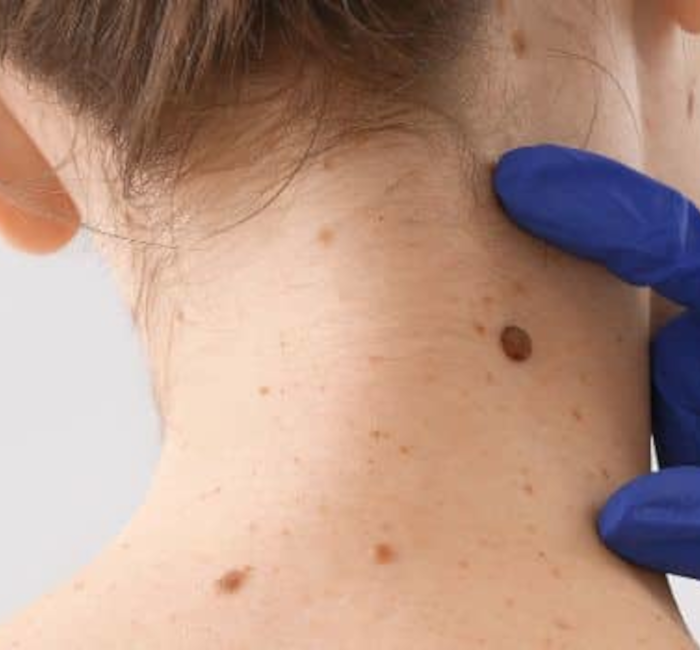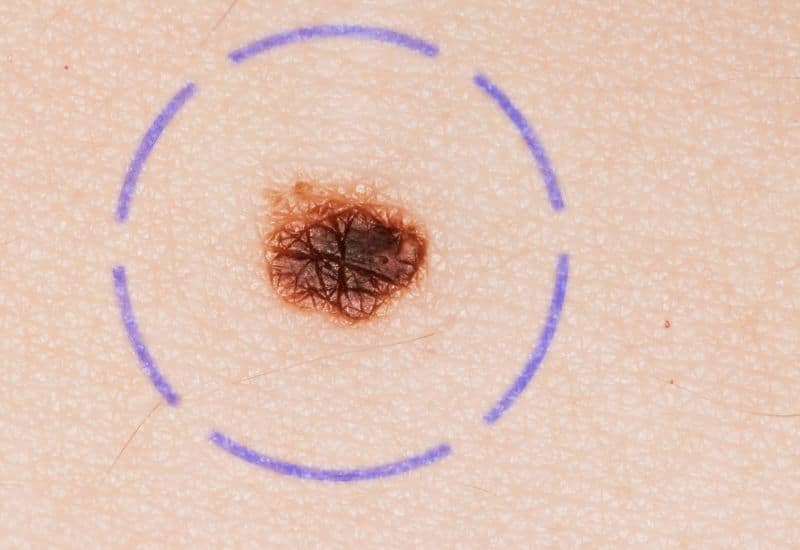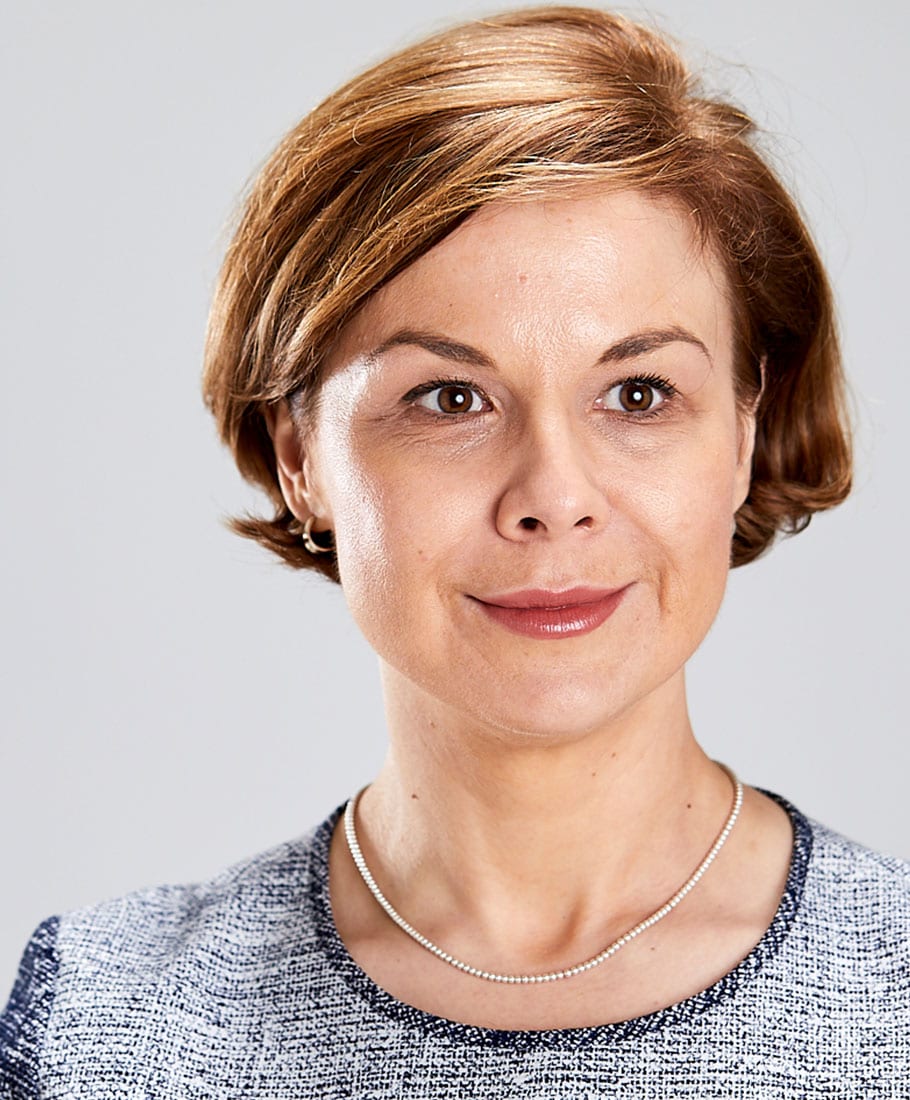Procedures
Melanoma Surgery

When one is diagnosed with melanoma, it can be a frightening experience. This is a type of skin cancer that is known for its aggressive nature. However, it’s important to remember that there are treatment options available, and one of the primary ones is melanoma surgery. This surgical procedure aims to remove the melanoma and some of the surrounding skin tissue, providing the best chance at full recovery. The surgery’s effectiveness can be significantly high if the cancer is detected early enough.
Anca Breahna is a highly respected and experienced plastic surgeon with an outstanding track record in the treatment of skin cancers, including melanoma.
At a glance
Depends on the type of procedure performed
Local or General Anaesthesia
Table of Contents
What is Melanoma Surgery?
Melanoma surgery, as the name suggests, is a surgical procedure conducted to treat melanoma – a serious form of skin cancer. The primary goal of this surgery is to cohompletely remove the cancerous lesion from the skin, and in some cases, also the nearby lymph nodes if they’re involved. The surgery may be straightforward or complex, depending on the stage of the melanoma, its size, and its location on the body.
In essence, the surgery involves the use of a scalpel or other surgical instruments to excise the melanoma. The extent of the surgery and whether additional treatments are needed usually depends on how deeply the melanoma has penetrated into the layers of the skin and whether it has spread to other parts of the body. The goal of any melanoma surgery is to eliminate the cancer completely, prevent its recurrence, and preserve the function and appearance of the affected area as much as possible.

Who Needs Melanoma Surgery?
Melanoma surgery is primarily utilised for individuals who have been diagnosed with melanoma. However, a person’s suitability for the procedure will depend on a range of factors. These factors include:
- Melanoma Diagnosis: The first and most important criterion is a confirmed diagnosis of melanoma. This is typically determined through a biopsy, where a sample of the suspicious skin lesion is examined under a microscope. A diagnosis of melanoma, regardless of its stage, will generally warrant consideration for surgery
- Stage of Melanoma: The stage of the melanoma is another crucial factor. Those with early-stage melanoma (stages 0, I, and II), where the cancer is still confined to the skin, are prime candidates for surgery as the primary treatment. For more advanced melanoma (stages III and IV), surgery may still be part of the treatment plan, but it’s likely to be combined with other therapies like immunotherapy or targeted therapy
- Location and Size of the Melanoma: The location and size of the melanoma also play a role. Melanomas on easily accessible locations (like the arm) are generally easier to remove surgically than those in more challenging areas (like the face). Larger melanomas may require more extensive surgery compared to smaller ones
- Health Status of the Patient: The overall health of the patient is a determinant in their candidacy for surgery. The patient must be in good enough health to undergo the procedure and handle the anaesthesia. Age, other underlying health conditions, and general physical health are considered here
- Lymph Node Involvement: If the melanoma has spread to the lymph nodes (stage III), the patient may be a candidate for a more extensive surgical procedure to remove these affected nodes, typically known as a lymph node dissection
- Metastatic Melanoma: In some cases, if the melanoma has spread to other organs (stage IV), but the spread is limited in number and location, these metastases may be surgically removed – a procedure called metastasectomy
Benefits of the Melanoma Surgery Procedure
There are several benefits to undergoing melanoma surgery, which serve to underscore its position as the first-line treatment for melanoma.
- Cancer Removal: The most notable benefit is the removal of the cancerous melanoma from the body. When performed correctly, and in the early stages of melanoma, surgery can effectively get rid of all the cancer cells, potentially leading to a complete cure
- Prevention of Spread: Melanoma surgery also helps to prevent or slow down the spread of cancer to other parts of the body. By removing the primary tumour, it halts the source of cells that could potentially spread elsewhere
- Relief from Symptoms: For larger or advanced melanomas, surgery can provide relief from symptoms. While it may not necessarily provide a cure in these cases, it can significantly improve the quality of life for the patient
- Providing Information: The removed tissue provides valuable information about the cancer stage and how aggressive it is. This information guides further treatment decisions and gives a clearer prognosis
Types of Melanoma Surgery Procedures
Wide Excision
This is the most common type of surgery for melanoma. In a wide excision, Anca removes the melanoma along with a margin of normal skin surrounding it. The size of this margin depends on the thickness of the melanoma. A wide excision can be performed under local anaesthesia and typically leaves a scar.
Suitable for: Melanomas of any thickness that are in locations allowing for sufficient margins.
Mohs Surgery
Named after Frederic E. Mohs who developed the procedure, Mohs surgery is a specialised form of surgery. The unique aspect of this surgery is that it involves removing the cancer and then immediately examining the excised tissue under a microscope to check for cancer cells. If cancer cells are found, the surgeon removes more skin and examines it again. This process continues until no more cancer cells are detected. (Anca doesn’t perform Mohs surgery.)
Suitable for: Melanomas on areas where it’s important to save as much skin as possible, such as the face. It’s also useful for large melanomas that don’t have a clear border or have come back after previous treatment.
Lymph Node Dissection
If the melanoma has spread to the lymph nodes, Anca may perform a lymph node dissection. In this procedure, your plastic surgeon removes all the lymph nodes in the affected area, rather than just one or two. This operation is more extensive and usually requires general anaesthesia.
Suitable for: Patients where melanoma has spread to the lymph nodes. It’s also used in a “completion lymph node dissection” scenario, where further lymph nodes are removed following a positive sentinel lymph node biopsy.
Metastasectomy
In cases where melanoma has spread to other parts of the body, such as the lungs or liver, and the spread is limited, these metastases might be surgically removed in a procedure called metastasectomy.
Suitable for: Patients with a limited number of metastatic melanoma lesions, which are isolated and can be safely accessed by a plastic surgeon.
How is the Melanoma Surgery Procedure Performed?
The specific process of melanoma surgery can vary depending on the type of surgery that is being performed. Here’s a more detailed look at how the process might unfold:
- Preparation: Prior to the surgery, your medical team will complete a thorough review of your medical history, and you may have preoperative tests to assess your overall health. These can include blood tests, imaging tests, and potentially a physical examination
- Anaesthesia: Before the procedure starts, you will be given anaesthesia. For most melanoma surgeries, local anaesthesia is used, which numbs the area around the melanoma. For more extensive surgeries, like a lymph node dissection or a metastasectomy, general anaesthesia might be used, which puts you to sleep for the entire procedure
- Wide Excision: For a wide excision, the surgeon will first use a marker to outline the area of skin to be removed. This includes the melanoma itself and a margin of normal skin surrounding it. The size of the margin will depend on the thickness of the melanoma. The outlined area is then removed using a scalpel
- Mohs Surgery: In Mohs surgery, the visible melanoma is removed first. Then, an additional layer of skin is removed and immediately examined under a microscope for cancer cells. If any are found, the process is repeated until no more cancer cells are detected in the skin layer. This ensures that all the cancer is removed while preserving as much healthy skin as possible
- Lymph Node Dissection: If a lymph node dissection is needed, the surgeon will make an incision in the area of the lymph nodes and remove them. This procedure is usually performed under general anaesthesia and may require a hospital stay
- Metastasectomy: In a metastasectomy, an incision is made in the area where the melanoma has spread, and the metastases are surgically removed. This procedure is also usually performed under general anaesthesia
- Closing the Wound: Once the melanoma has been removed, Anca will close the wound. This can be done with stitches for smaller wounds. For larger wounds, or if a large area of skin was removed, a skin graft may be needed. A skin graft involves taking a piece of healthy skin from another part of the body (the donor site) and using it to cover the area where the skin was removed
- Post-Surgery: After the surgery, you’ll be taken to a recovery room where your vital signs will be monitored as the anaesthesia wears off. Depending on the extent of the surgery, you may be able to go home the same day, or you may need to stay in the hospital for one or more nights
There are different types of surgery that can be performed to treat melanoma, each of which is suitable for different scenarios based on factors such as the size, depth, location, and stage of the melanoma.

Recovery after Melanoma Surgery Procedure
The recovery process following melanoma surgery varies depending on the extent of the surgery and the individual’s overall health. Here are the main aspects of recovery:
- After Surgery: Once the surgery is completed, you’ll be monitored in a recovery area until the effects of anaesthesia wear off. If the surgery was performed under local anaesthesia, you might be able to leave the hospital the same day. If you had general anaesthesia or a more extensive procedure, an overnight hospital stay may be necessary
- Managing Discomfort and Pain: Post-surgical discomfort is typical. Your plastic surgeon will provide appropriate pain relief medications to help manage this. It’s important to take these as directed and to notify your healthcare team if the pain is not adequately controlled
- Wound Care: Taking care of the surgical wound is vital to prevent infection and promote healing. This may involve cleaning the wound with mild soap and water, applying prescribed ointments, and changing dressings regularly
- Physical Activity: You may be instructed to avoid certain activities, particularly those that could strain the surgical site, until the wound has healed. Light activities like walking are usually encouraged as soon as you feel up to it, as they can aid recovery
- Follow-Up Appointments: Regular follow-up appointments are important to monitor your healing process, remove stitches if necessary, and check for any signs of melanoma recurrence. During these appointments, Anca will assess your wound and may order imaging tests or blood tests to ensure the melanoma has not returned or spread
- Long-term Surveillance: Even after recovery, you will continue to have regular check-ups to monitor for melanoma recurrence. This will involve regular skin checks and possibly further tests. You will also be advised on how to perform self-skin examinations at home
- Lymphedema Management: If you had a lymph node dissection, you might be at risk of developing lymphedema, a condition that can cause swelling in the affected limb. If this occurs, you might need physical therapy or special compression garments to manage it
- Emotional Support: The emotional impact of a melanoma diagnosis and treatment can be substantial. Psychological support, such as counselling or support groups, can be beneficial in managing these feelings. Discussing your feelings with your healthcare team can also help them provide you with the appropriate resources and support
Reviews
Patient satisfaction is the top priority for Anca. You can find how patients feel about her work below.
Ms Anca Breahna was most kind and empathetic during my recent procedure for skin cancer. She reassured me that I’m now completely clear, I have total confidence in her and would recommend her unreservedly. Thank you Anca.

Miss Breahna removed a cancerous nodule from my forehead in March 2021. I was quite nervous when I arrived at the hospital, but when I was greeted by a member of her team I started to feel calmer as they were so professional and friendly. Once inside the theatre Miss Breahna and her team helped me to feel relaxed and comfortable throughout, the team atmosphere was friendly and upbeat during my operation and I was looked after wonderfully. I would recommend Miss Breahna and her team to anyone requiring this type of surgery.Kate Hodson

Wish I’d Done It Sooner! I am so pleased with the results
After searching and deliberating for a long time, I consulted Anca regarding the removal of 3 lipomas. From start to finish, she was fantastic! One of the lipomas was on my forehead and I have to search for the scar! I am so pleased with the results of all and the one regret is that I didn’t find her sooner. I wouldn’t hesitate to recommend her
Further Reading
- Read Anca’s Blog on What Does Skin Cancer Look Like?
- Read Anca’s Blog on Looking for Skin Cancer Treatment near Chester?
- Read Anca’s Blog on Skin Cancer & Mole Surgery At Chester Cosmetic Surgery

Procedure
Frequently asked questions
How long does melanoma surgery take?
The duration of melanoma surgery can vary greatly depending on the specific procedure and the patient’s condition. Simple wide excision procedures may take less than an hour, while more complex surgeries such as lymph node dissection or metastasectomy can take several hours.
Will I have a scar after melanoma surgery?
Yes, all surgeries leave some type of scar. The size and visibility of the scar depend on the size and location of the melanoma and the type of surgery performed. Over time, the scar will fade, and there are scar minimisation treatments available if the scar’s appearance concerns you.
What is lymphedema and why might it occur after melanoma surgery?
Lymphedema is a condition that causes swelling, usually in the arms or legs, due to a blockage in the lymphatic system. If a lymph node dissection is performed as part of melanoma surgery, there’s a risk that lymphedema can develop in some patients.
What can I do to speed up my recovery after melanoma surgery?
Following your plastic surgeon’s instructions is the best way to aid your recovery. This may involve taking prescribed medications, properly caring for the surgical wound, and gradually resuming physical activity. It’s also important to eat a healthy diet and get plenty of rest.
Can melanoma come back after surgery?
While surgery aims to remove all cancer cells, there is a risk that melanoma can come back (recur) in the same place or elsewhere in the body. Regular follow-ups and monitoring are essential to detect any recurrence as early as possible. Also, practicing sun safety and skin self-exams can help catch a recurrence or new melanoma early.
What are the risks of melanoma surgery procedure?
Melanoma surgery, while a potentially life-saving treatment for this aggressive form of skin cancer, does not come without risks. As with any surgical procedure, there is a risk of infection, bleeding, and complications from anaesthesia. Surgery can also result in scarring, nerve damage, and in some cases, lymphedema. Further, there’s the risk that not all cancerous cells will be completely removed during the procedure, potentially allowing for a recurrence or metastasis of the disease.
Medical References about Melanoma Surgery
- Melanoma – Diagnosis and Treatment – Mayo Clinic
- Melanoma / Skin Cancer – Medical News Today
- Melanoma Facts – Melanoma Institute Australia
- Defining An Acceptable Period of Time from Melanoma Biopsy To Excision – NCBI
- Melanoma & Skin Cancer: Treatment & Care – WebMD






